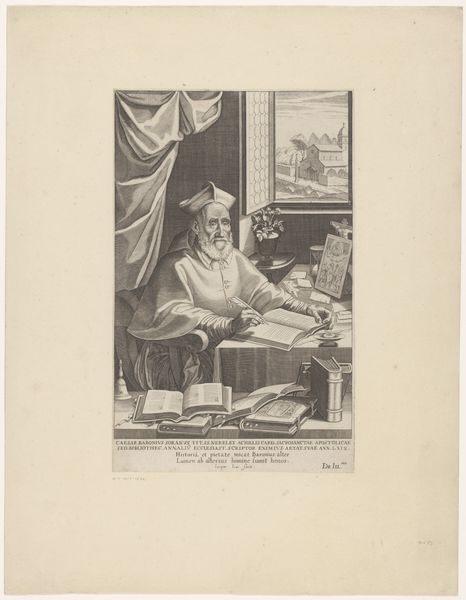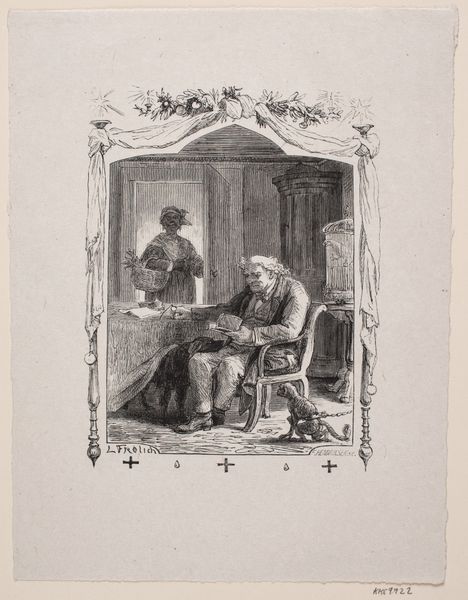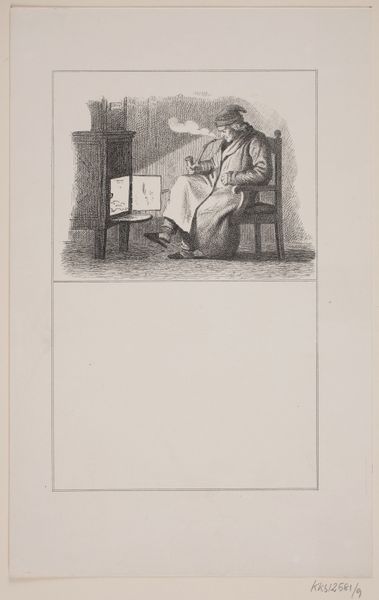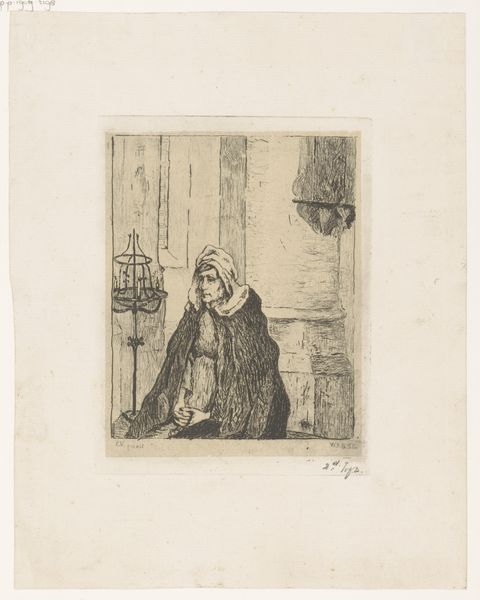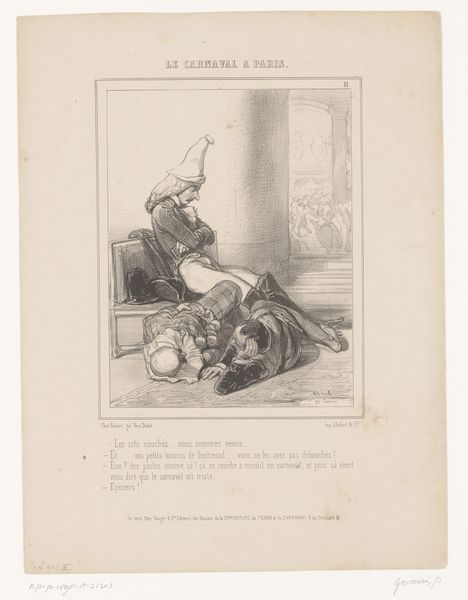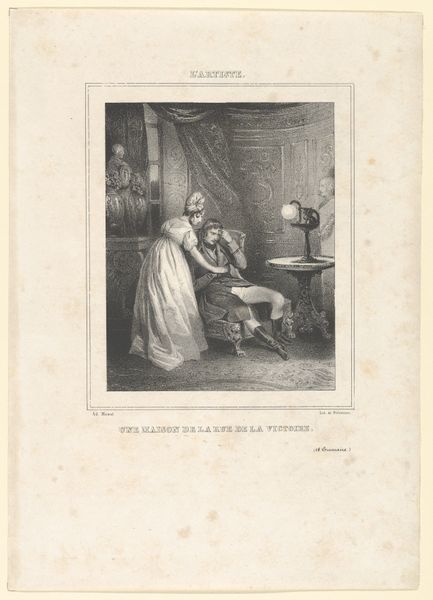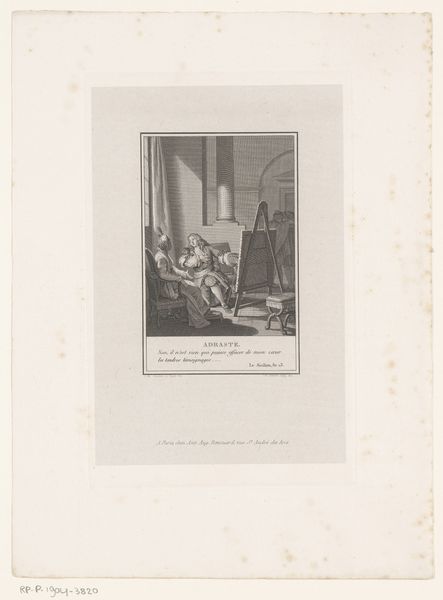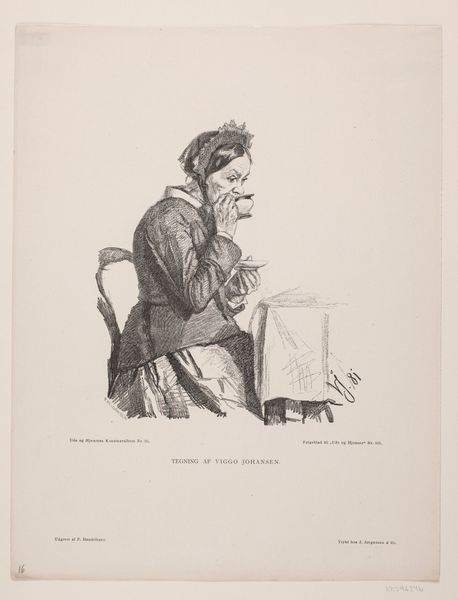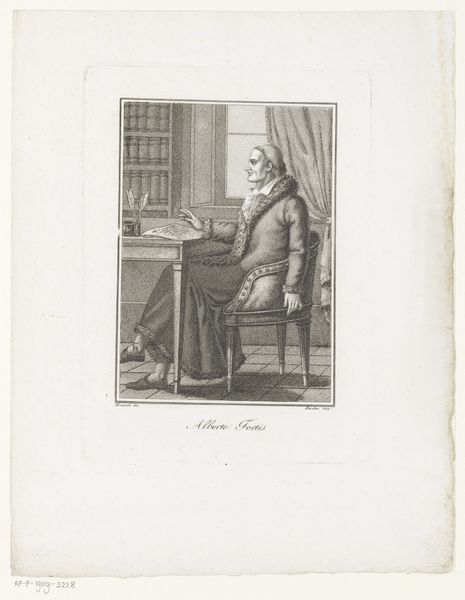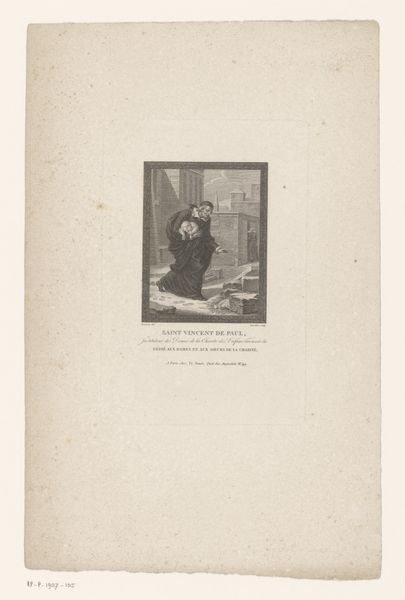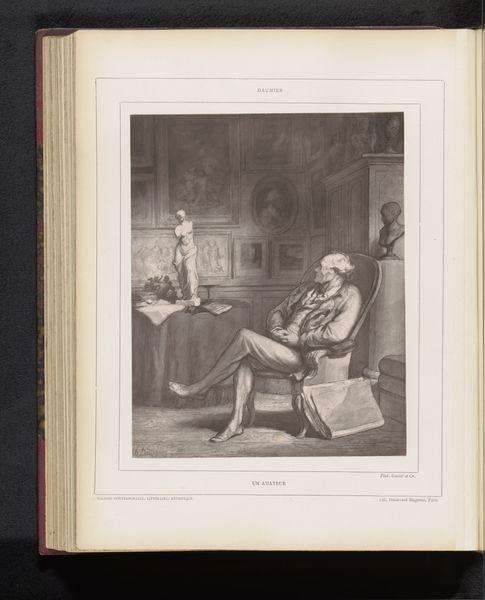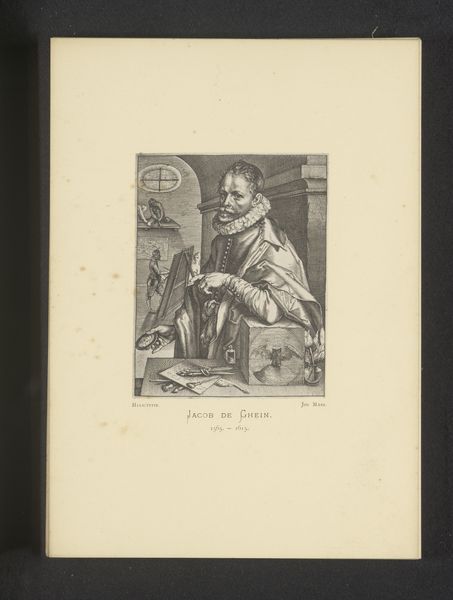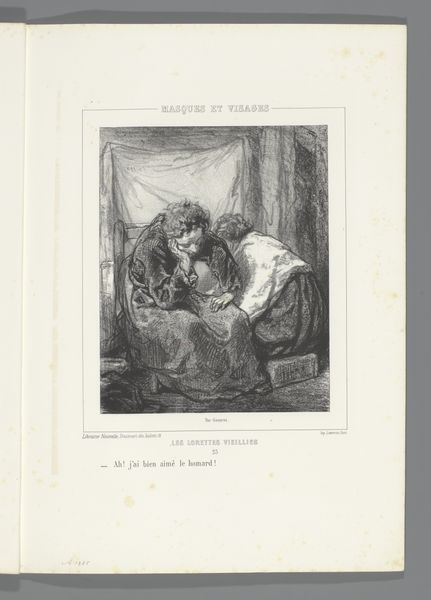
Dimensions: 218 × 185 mm (image); 364 × 268 mm (sheet)
Copyright: Public Domain
Editor: Here we have "Les Invalides du Sentiment: Child-Harold," a lithograph from 1852 by Paul Gavarni, housed right here at the Art Institute of Chicago. The figure is so solitary and dejected; the heavy shading really amplifies the feeling of melancholy. What do you see in this piece? Curator: Well, the title is key – it evokes Byron's "Childe Harold's Pilgrimage," a famous poem of Romantic alienation. Gavarni is playing with this cultural archetype, presenting a 'casualty of sentiment.' Note the two glasses before him. Is he waiting for company that will never arrive, or has that person left him, now gone, consumed one drink? Editor: Oh, that’s interesting! I hadn’t thought about the second glass that way. It adds to the sense of loneliness. I also notice the hat resting behind him; is that to do with Childe Harold’s travels, the symbol of the eternal traveler? Curator: Precisely. Consider the visual weight of the man's downcast gaze, almost mirroring the drooping hat and the blurred and shadowed paintings behind him. This is an orchestrated display of disillusioned Romanticism. It critiques the very emotional excesses it seems to depict, presenting us with not just an individual’s sadness, but with its performance, its cultural codification. Editor: So, it's both embodying and critiquing Romanticism at the same time? Curator: Exactly! It acknowledges the power of these romantic themes while also subtly poking fun at the fashionable melancholy of the time. The character of Harold has become old now and disillusioned; how can this symbol persist when time and circumstance have eroded its luster? He is not the only invalid of feeling - the paintings, the room itself has become invalid as well. Editor: I see! I'll definitely never look at a melancholic figure the same way again! I found myself drawn in and have learnt so much in this brief discussion! Curator: I agree; considering Gavarni's work in relation to both psychological symbolism and societal trends unlocks fascinating perspectives on the Romantic era and the symbols by which that cultural continuity perpetuates itself.
Comments
No comments
Be the first to comment and join the conversation on the ultimate creative platform.
